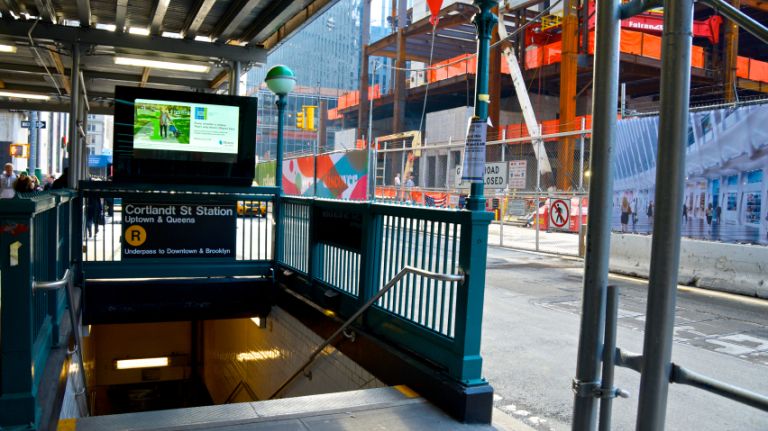
Scaffolding is everywhere. I hate it.
It’s a scourge that routinely increases in the warm weather — also because of a city law that requires more frequent building facade inspections — and lingers long past the season. But in the 40 years I’ve lived in Manhattan, I have never seen this much.
Yes, scaffolding is a necessary evil: It’s erected to protect pedestrians while owners repair buildings. I can expect two years of this ugly wrap as we undergo asbestos abatement and major repairs to the roof of my 100-year-old building in the West Village.
Scaffolding went up on my sidewalk on Washington Street months ago, and now you have to step aside to let another pedestrian pass. But the work being done now is on West Street, on the other side of the building — a block away.
My very unscientific survey, based on years of observation while walking around Greenwich Village, shows that scaffolding often goes up way before work begins, it stays up long after work has ended, and the work takes forever.
Let’s face it — scaffolding hides beautiful architecture (the stunning Jefferson Market Library on 10th Street was hidden behind scaffolding for years), and it attracts graffiti and posters. It can damage trees and block sunlight from gardens and benches. For instance, the popular benches on my block are ensnared under scaffolding and my sidewalk garden is suffering this summer.
On crowded sidewalks, like 14th Street at Union Square, scaffolding impedes pedestrians as they wend their way around giant poles. The nuts and bolts are supposed to be covered with tape or rubber tips to prevent injuries, but I could go for a short walk and easily find exposed bolts.
How can we improve this situation? Tighten up the schedules. No more throwing up scaffolding and starting work months later. No leaving it up months after the work is done. No dragging out work for years.
Don’t get me wrong, safety is a priority, but my beautiful city, with its stunning architecture, is hidden behind a border whose sidewalk poles are more than just a nuisance.
City officials need to ensure that scaffolding goes up and down as quickly as possible without compromising safety.
Kate Walter is a freelance writer living in the West Village.


















